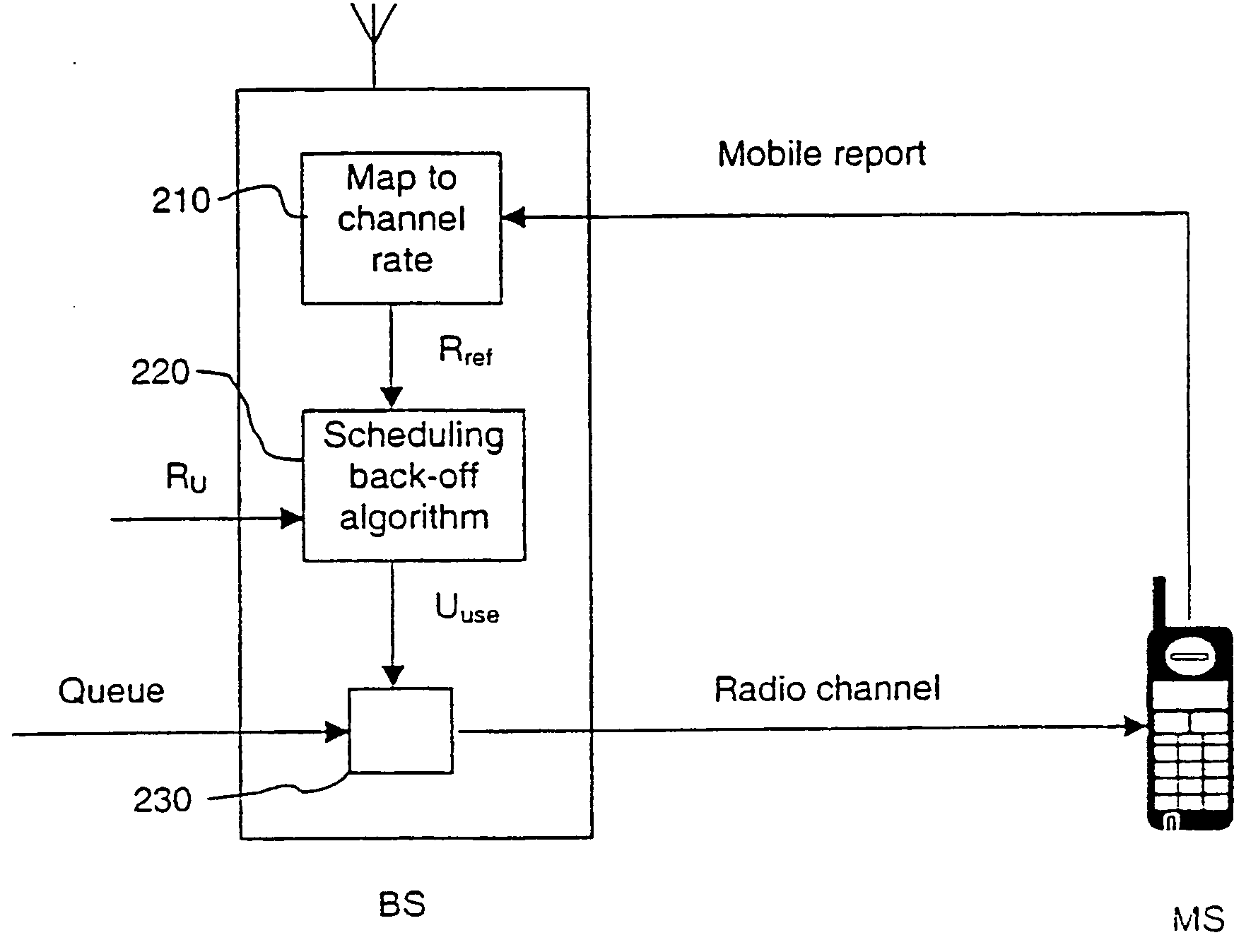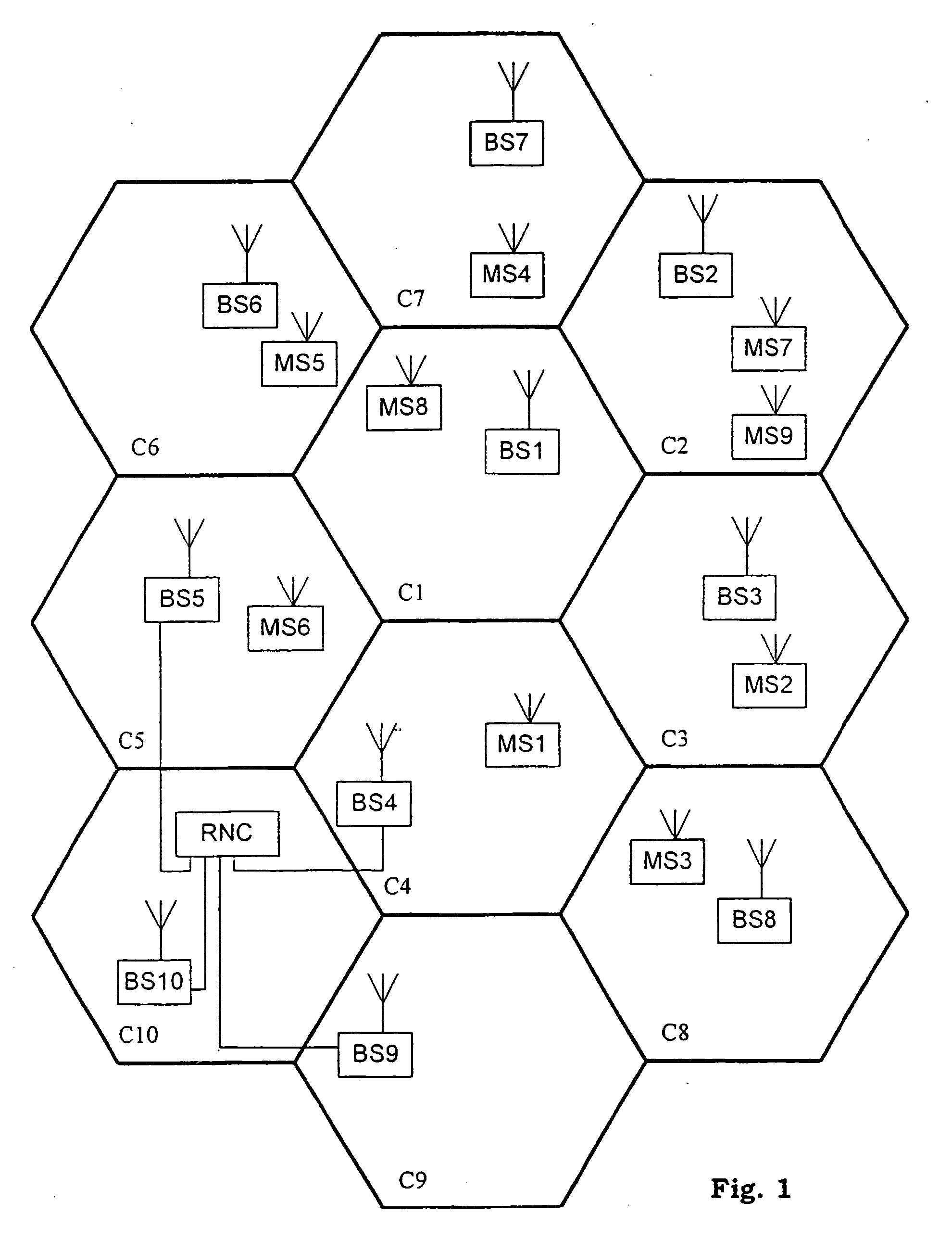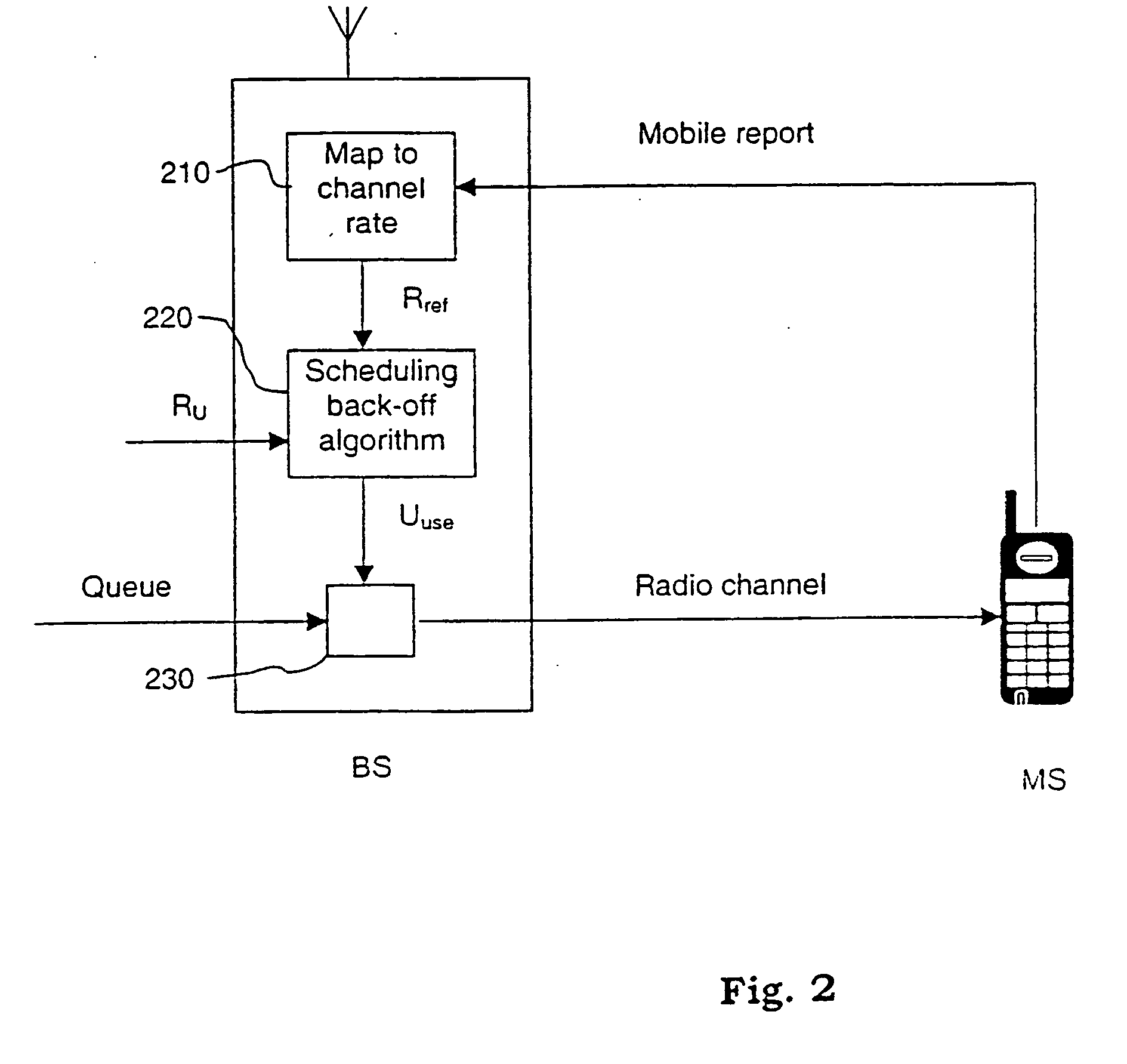Method and arrangement for allocation the quantity of a channel to a mobile station as a function of the measured quality
a technology of measuring quality and allocation quantity, which is applied in the field of method and arrangement in a wireless communication system, can solve the problems of reducing the fraction, affecting so as to improve the fraction, and improve the quality of the channel
- Summary
- Abstract
- Description
- Claims
- Application Information
AI Technical Summary
Benefits of technology
Problems solved by technology
Method used
Image
Examples
Embodiment Construction
[0045]FIG. 1 illustrates ten cells C1-C10 in a typical cellular mobile radio communication CDMA-system as one example of a wireless communication system in which the present invention may be utilized. Normally a cellular mobile radio communication system would be implemented with more than ten cells. Each cell, C1-10, is related to a logical base station, BS1-BS10 respectively, called Node B in the 3GPP standard specification. A logical base station can support FDD (Frequency Division Duplex) mode, TDD (Time Division Duplex) mode or dual-mode operation. FIG. 1 also illustrates nine mobile stations MS1-MS9 which are movable within the cells and from one cell to another. In this disclosure, a mobile station is defined as any mobile station, e.g. a mobile phone or a mobile computer provided with equipment for wireless communication. In a typical cellular mobile radio communication system there would normally be more logical base stations and mobile stations. In fact, there is typically...
PUM
 Login to View More
Login to View More Abstract
Description
Claims
Application Information
 Login to View More
Login to View More - R&D
- Intellectual Property
- Life Sciences
- Materials
- Tech Scout
- Unparalleled Data Quality
- Higher Quality Content
- 60% Fewer Hallucinations
Browse by: Latest US Patents, China's latest patents, Technical Efficacy Thesaurus, Application Domain, Technology Topic, Popular Technical Reports.
© 2025 PatSnap. All rights reserved.Legal|Privacy policy|Modern Slavery Act Transparency Statement|Sitemap|About US| Contact US: help@patsnap.com



